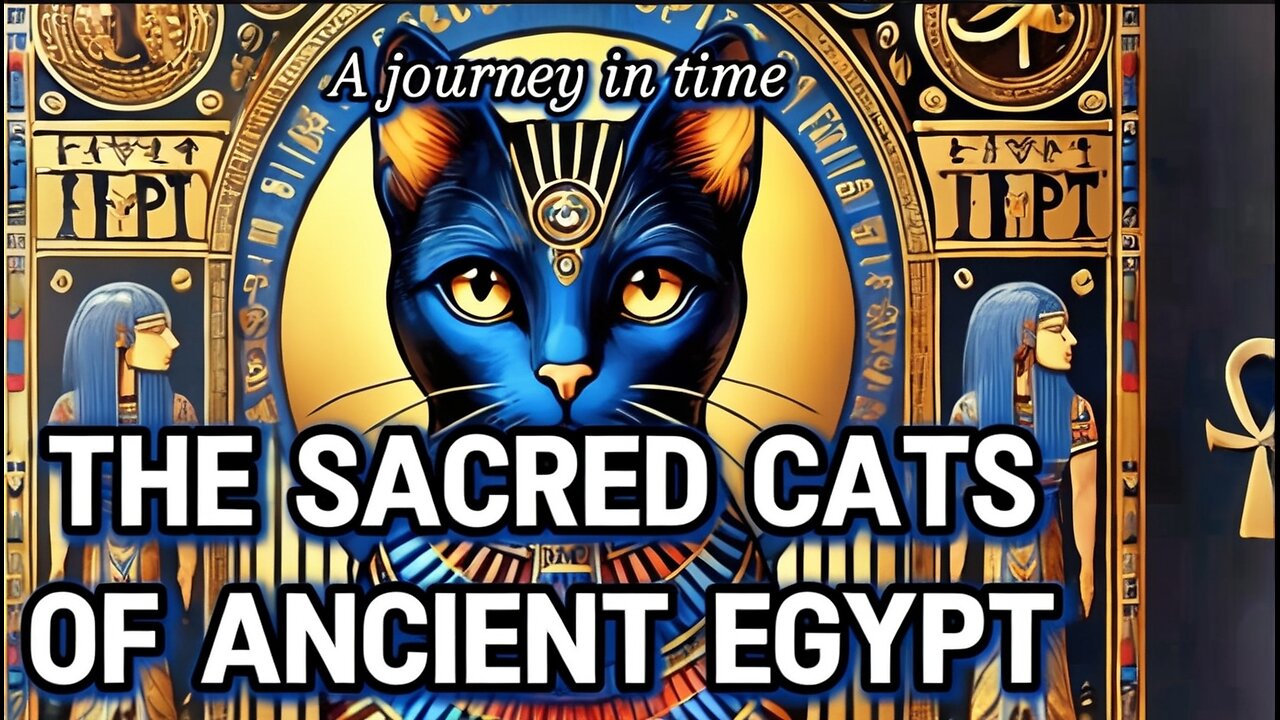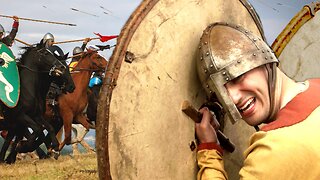Premium Only Content

Majestic Life of Cats in Ancient Egypt: A Feline Tale of Reverence and Legacy
a cat living in ancient Egypt, portraying a rich tapestry of feline reverence and cultural significance associated with cats. Central to the narrative is a cat's perspective on its life amidst the grandeur of ancient Egyptian society, depicting the household of Imhotep, a prominent architect and priest dedicated to the goddess Bastet. The cat reflects on its early days spent in luxury, highlighting the integral role cats played in Egyptian households, notably as companions and protectors against vermin. As the story unfolds, the cat describes the customary practice of mourning among Egyptians when a feline companion dies, illustrating the deep bonds between humans and cats. It elaborates on the mummification practices, where cats were given a sacred send-off, often adorned with elaborate funerary objects befitting their revered status. The cat recalls its mother, who was a temple cat, and reflects on her role within the religious context tied to Bastet, the goddess associated with cats, fertility, and motherhood. The narrative delves into the cat's formative experiences, detailing its playful companionship with a girl named Sekhmet, emphasizing the innocence and joys of youth intertwined with the grave responsibilities of protecting the household. The cat also presents a nuanced exploration of ancient beliefs surrounding the divine connection between felines and the deities, reinforcing how cats were considered sacred beings deserving of veneration and respect. A significant event occurs when the cat’s mother is fatally wounded while attempting to defend against a snake, showcasing bravery and maternal instinct. The cat’s desperate efforts to assist its mother and the ensuing chaos are powerful elements highlighting themes of loyalty and sacrifice. The text explains how the community mourns the death of the noble mother cat, showcasing the rituals performed to honor her memory, in line with ancient Egyptian practices. This act of mourning is characterized by the shaving of eyebrows, a poignant representation of grief, and the ensuing elaboration of funerary rites displays the meticulous care given to the deceased despite their species. The cat, reflecting on the passage of time, recognizes that it must step into the role previously held by its mother, signifying the transition of responsibilities within the temple and the broader cultural expectation of lineage and duty. The cat learns of the intricate spiritual connections that exist between felines and the divine, solidifying its place as both a protector of the household and a vessel through which the goddess Bastet’s power is channeled. As it gradually takes on the role of leader among the temple cats, it recognizes the legacy of care and reverence that its mother embodied. This narrative of cultural significance sheds light on the ancient Egyptian worldview that revolved around animals, particularly cats, as intermediaries between the divine and the earthly. The depiction of cat mummification rituals illustrates a broader societal belief in an afterlife that honored these ancient creatures, enhancing our understanding of how animals were integrated into the spiritual and everyday lives of Egyptians. Furthermore, the interactions between the cat and human characters enrich the narrative, showing the coexistence of cats and humans in harmony while both pursued distinct yet intertwining paths. Throughout the text, there are consistent themes of loyalty, loss, and the passing of traditions from one generation to another. The narrative echoes the values held by Egyptian society, where animal deities were celebrated, and the creatures that represented them were afforded similar respect and reverence. The cat’s exploration of its identity underscores the complexities of being a beloved creature within a human-centric society while simultaneously embracing its own intrinsic nature. In essence, the account provides a vivid depiction of life through the eyes of a cat in ancient Egypt, illustrating how deeply intertwined feline companionship was with culture, spirituality, and societal practices. By infusing anecdotes of personal connection and societal roles, the story highlights the influence of sacred reverence and human-animal relationships in an era where every creature, particularly cats, was seen with admiration and significance. The text ultimately propels forward the notion that the legacy of these cats continues to resonate, reminding us of their impactful presence that extended well beyond being mere pets; they were, and still are, cherished and respected creatures, holding vital roles in both domestic environments and ancient spiritual beliefs. This rich narrative serves as a testament to the longstanding bond between cats and humans while providing intriguing insights into the cultural fabric of ancient Egypt, encouraging a deeper appreciation for the roles that animals play in our lives—past, present, and future.
-
 DVR
DVR
Josh Pate's College Football Show
3 hours ago $0.19 earnedBig Ten Program Rankings | What Is College Football? | Clemson Rage| Stadiums I Haven’t Experienced
17.1K -
 LIVE
LIVE
Vigilant News Network
8 hours agoBombshell Study Reveals Where the COVID Vaccine Deaths Are Hiding | Media Blackout
2,314 watching -
 1:17:59
1:17:59
Sarah Westall
4 hours agoDOGE: Crime & Hysteria bringing the Critics & the Fearful - Plus new CDC/Ukraine Crime w/ Dr Fleming
15.7K2 -
 45:39
45:39
Survive History
10 hours ago $2.10 earnedCould You Survive in the Shield Wall at the Battle of Hastings?
6.49K5 -
 1:50:28
1:50:28
TheDozenPodcast
8 hours agoViolence, Abuse, Jail, Reform: Michael Maisey
34K1 -
 23:01
23:01
Mrgunsngear
1 day ago $3.53 earnedWolfpack Armory AW15 MK5 AR-15 Review 🇺🇸
42.2K12 -
 25:59
25:59
TampaAerialMedia
1 day ago $1.19 earnedUpdate ANNA MARIA ISLAND 2025
22.3K1 -
 59:31
59:31
Squaring The Circle, A Randall Carlson Podcast
10 hours ago#039: How Politics & War, Art & Science Shape Our World; A Cultural Commentary From Randall Carlson
17.4K2 -
 13:21
13:21
Misha Petrov
10 hours agoThe CRINGIEST Thing I Have Ever Seen…
14.5K36 -
 11:45
11:45
BIG NEM
6 hours agoWe Blind Taste Tested the Best Jollof in Toronto 🇳🇬🇬🇭
9.1K